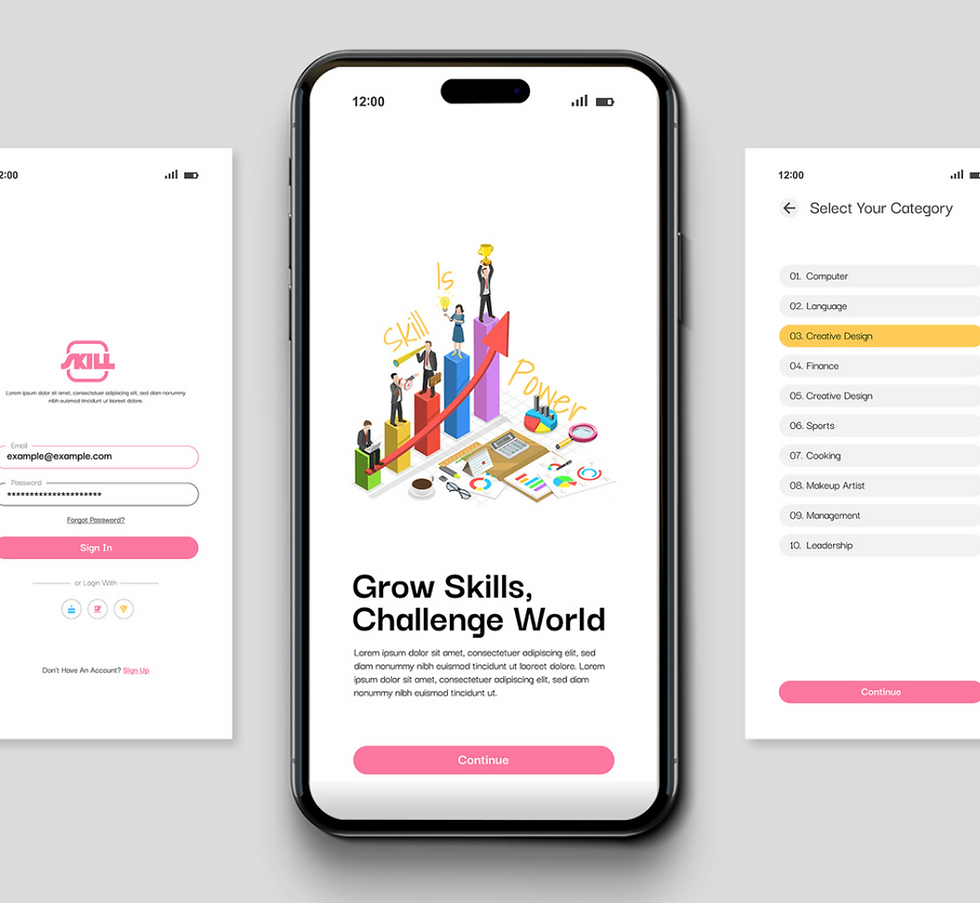How to Collaborate with Clients on Graphic Design Projects
- eventslabsydney

- Apr 7
- 4 min read
Collaboration is essential in graphic design, especially when working directly with clients. Effective communication, gathering meaningful feedback, and managing relationships can significantly enhance the design process, leading to better outcomes for both designers and clients. This guide provides practical advice for graphic designers looking to collaborate efficiently on their projects.
Establish Clear Communication Channels
Open communication from the start is crucial for successful collaboration. Begin by discussing your preferred communication tools with the client. Options like e-mail, messaging apps, or video calls can be utilised, but the key is consistency. For example, if a client prefers Slack for quick updates and emails for detailed feedback, stick to that plan.
Define response times early—let clients know when they can expect updates or responses. If you’re working on a larger project, create a communication schedule. Regular check-ins can help keep the project moving and ensure the client remains engaged.
Understand Client Expectations
To design effectively, it's vital to grasp what your client expects. During initial meetings, ask open-ended questions about their vision, goals, and specific requirements. For instance, if a client runs a bakery, ask about their brand's personality. Do they want a fun and whimsical design or something more elegant? Encourage them to share design inspirations, such as links to websites or images they admire.
Document their feedback and keep this information accessible throughout the project. This not only clarifies their desires but also shows your commitment to realizing their vision.
Gather Feedback Effectively
Quality feedback is a cornerstone of graphic design. However, not all feedback is equally helpful. Aim to collect specific and actionable comments rather than vague remarks. Instead of a general question like "What do you think?", ask “Which elements align best with your vision of luxury?”
Using structured feedback forms can guide clients to provide more useful insights. For example, you might include a section where clients can rate aspects of the design from one to five, making it easier for them to express their thoughts clearly.
Maintain a Positive Relationship
Building a strong relationship with clients can lead to successful collaborations and future work. Acknowledge their ideas and contributions. This recognition makes clients feel valued and encourages open communication. Be approachable and willing to listen to their concerns throughout the design process.
When challenges come up, remain professional and focused on solutions. If a client expresses dissatisfaction with a design, calmly discuss their concerns and collaboratively work towards adjustments that meet their needs.
Set Realistic Timelines
Timelines are vital for project success and client satisfaction. Clearly define deadlines for each phase of the design process. For example, set a timeline that includes draft presentations within two weeks and final deliverables in four weeks. Additionally, allow buffer time for revisions and unexpected issues.
If you need to make adjustments to timelines, communicate this transparently with clients. This builds trust and reassures them that their project is a priority.

Utilise Prototypes and Mockups
Prototypes and mockups can significantly boost client understanding and feedback. These visual aids help clients envision the final product and provide more accurate insights. Tools like Adobe XD or Figma allow you to present your designs interactively.
Encourage clients to engage with these prototypes, asking them to rate features or suggest changes. For instance, during a mockup review, a client might realize they prefer a different color scheme, leading to more targeted revisions that enhance the final output.

Encourage Collaborative Input
Involving clients in the design process fosters a sense of ownership over the final product. Invite them to share their ideas, sketches, or references that resonate with their vision. This collaborative approach allows clients to express their creativity while ensuring the final design meets their expectations.
Consider organizing brainstorming sessions where clients can participate in a lively discussion about design possibilities. Such interactions not only generate great ideas but also strengthen the working relationship.
Handling Revisions Gracefully
Revisions are a normal part of the design journey, but how you manage them can greatly influence client satisfaction. Establish a clear revision policy upfront—specifying how many revisions are included within the project scope can help manage expectations.
When receiving feedback, listen attentively and ask clarifying questions if needed. After implementing changes, follow up with clients to ensure that their needs were addressed. This demonstrates commitment to their vision and helps maintain a positive working relationship.
Document Everything
Thorough documentation is essential for clarity and accountability. Keep records of all communications, feedback, and design iterations. This not only prevents misunderstandings but also creates a reference point if disputes arise later.
At the end of each project phase, provide clients with a summary highlighting accomplishments, changes made from feedback, and the next steps. This ensures that everyone is aligned and ready to move forward together.
Final Review Before Delivery
As the project approaches completion, conduct a final review with the client to confirm all elements meet their expectations. This is your chance to address any lingering questions or concerns, enabling last-minute adjustments before final delivery.
After the review, prepare a comprehensive delivery package that includes all final materials, usage rights, and necessary information about file formats and applications. This thorough approach minimizes confusion and sets a professional tone for future collaborations.
Closing Thoughts
Working closely with clients on graphic design projects can be highly rewarding when approached with effective communication and structure. By establishing clear channels, understanding expectations, gathering actionable feedback, and maintaining positive relationships, designers can navigate the complexities of collaboration smoothly.
Engaging clients in the design process, setting realistic timelines, and documenting all interactions lead to a more streamlined experience for both parties. With these practical tips, graphic designers can promote successful collaborations and create designs that genuinely resonate with their clients.




Comments